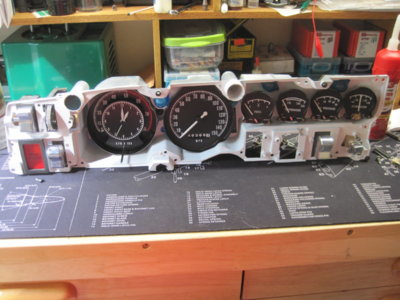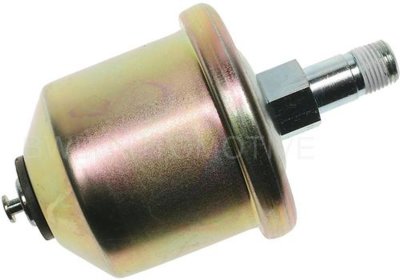jogirob
Well-Known Member
Just thinking out loud here, please feel free to correct me:
Did the gauge sweep test by removing the sending unit wire from behind the oil and fuel gauges and attached em to a good ground. Turned ignition key to on:
Fuel Gauge = Complete sweep
Oil Gauge = Completely dead
***Oil gauge needs replacement***
With ignition key to the on position voltage limiter reads ~12v on the input side and a pulsating ~0-5v on the other.
***Voltage limiter checks good***
Did a continuity test from the wire leading to the fuel tank sending unit:
Reads ~85ohms from the sending unit wire behind the gauge clusters
Reads ~85ohms from the sending unit plug right on the fuel tank
I have a little over half a tank so it should read around 23ohms.
I did a voltage check from the tank side of the sending unit wire and I get the pulsating 0-5v from the voltage limiter.
***Fuel tank sending unit needs replacement***
I measured resistance from the oil pressure sending unit over behind the gauge cluster and got a "1" or no continuity. I turned the engine on and let it warm up and still resistance read "1". I took a look at the oil pressure sending unit and there doesn't appear to have any wires coming out of it to test? There is a set of unplugged spades that looks like it reaches exactly to the little bell shaped contraption but then again this car is full of unplugged connectors that go nowhere. How do you test the sending unit itself?
***???***
Did the gauge sweep test by removing the sending unit wire from behind the oil and fuel gauges and attached em to a good ground. Turned ignition key to on:
Fuel Gauge = Complete sweep
Oil Gauge = Completely dead
***Oil gauge needs replacement***
With ignition key to the on position voltage limiter reads ~12v on the input side and a pulsating ~0-5v on the other.
***Voltage limiter checks good***
Did a continuity test from the wire leading to the fuel tank sending unit:
Reads ~85ohms from the sending unit wire behind the gauge clusters
Reads ~85ohms from the sending unit plug right on the fuel tank
I have a little over half a tank so it should read around 23ohms.
I did a voltage check from the tank side of the sending unit wire and I get the pulsating 0-5v from the voltage limiter.
***Fuel tank sending unit needs replacement***
I measured resistance from the oil pressure sending unit over behind the gauge cluster and got a "1" or no continuity. I turned the engine on and let it warm up and still resistance read "1". I took a look at the oil pressure sending unit and there doesn't appear to have any wires coming out of it to test? There is a set of unplugged spades that looks like it reaches exactly to the little bell shaped contraption but then again this car is full of unplugged connectors that go nowhere. How do you test the sending unit itself?
***???***



















